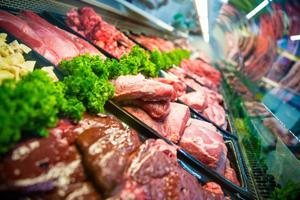 Switching to a low-carb diet is a big lifestyle change. Learning about low-carb foods and getting used to shopping the low-carb way is essential to your diet’s success.
Switching to a low-carb diet is a big lifestyle change. Learning about low-carb foods and getting used to shopping the low-carb way is essential to your diet’s success.
Most of us perform regular tasks such as shopping without thinking much – just acting out of habit, buying similar things over and over again. So if you are used to structuring your meals around pasta, rice and potatoes, you will need to learn new shopping habits.
This post provides some general tips and guidance on buying low-carb foods in the UK.
These tips are for people who have recently started a low-carb, moderate- to high-fat diet. I will assume that you are not a vegetarian (apologies, but being a passionate carnivore myself, I don’t really have any advice that would be of use to vegetarians).
Always consult the guidelines of your chosen low-carb diet plan, as there may be variations in specific permitted foods.
Animal proteins

Always buy fresh, unprocessed varieties, with nothing added – if a food has been processed, marinated, or had a sauce added to it, then it’s likely also had some extra carbs and chemical preservatives sneaked in.
Obviously, you should also avoid anything breaded or battered, as that adds carbs (so fish fingers don’t count as fish).
If you can afford it, opt for organic free-range produce, preferably from a local farm rather than a supermarket. Quality and flavour will be better, but it will cost you quite a bit more than standard supermarket meat. I personally believe that this extra expense is worthwhile, but it obviously depends on your budget and lifestyle.
One way of spending less without compromising on quality is getting frozen meat or poultry in big packs. Fish tinned in brine or oil is another good way to save. Eggs are also a great inexpensive source of protein.
Be aware that some shellfish and offal meat such as liver can have a small amount of carbs, about 1-2g per 100g. This is usually negligible, but remember to count it if you are on a very strict plan such as Atkins Induction or Keto.
There are thousands of ways to cook animal proteins. I find the most convenient ways for me are usually pan-frying, roasting and slow-cooking.
My personal shopping list includes the following:
- nice treats: beef steak and rib roast, duck breasts, fresh shellfish, fresh whole fish
- average every-day options: chicken (whole bird, breasts), lamb (chops, leg, rolled shoulder), pork (chops or steaks), salmon or cod fillets, minced meats (ensure there is nothing added), seafood or fish-pie mix, smoked salmon and mackerel, eggs
- budget options: tinned tuna and salmon, chicken legs, pork belly, chicken or duck livers
Good low-carb options: any fresh (or frozen and tinned with no additives) unprocessed meat, fish, poultry, seafood, eggs, offal
Bad low-carb options: anything processed, breaded or covered in sugary sauce
Vegetables on a low-carb diet
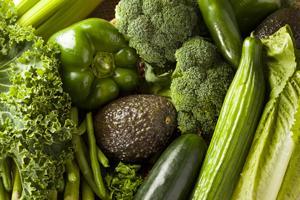
Vegetables will step into the void left by potatoes, rice and pasta, to provide some company for your proteins. They do contain some carbs, about 2-9g per 100g, which is quite low, but do keep an eye on quantities if you are on a very low-carb plan.
Generally speaking, any vegetable that’s green in colour is usually low in carbs. This includes all salad and leafy greens – lettuces, spinach, kale, pak choi, salad herbs. Other green-coloured heroes are cabbages, green beans, broccoli, okra, courgettes, cucumbers, green peppers, spring onions, asparagus. Avocado is also good.
Non-green salad vegetables such as tomatoes, radishes and bean sprouts are also low in carbs.
Some other non-starchy vegetables that could provide a good alternative to chips and roast potatoes are cauliflower, aubergines, butternut squash, pumpkin and mushrooms.
I am very jealous of Americans posting recipes with spaghetti squash, but unfortunately I have been unable to find this elusive vegetable in the UK.
Stay away from root vegetables such as beetroot and carrots, as they tend to be higher in carbs. Potatoes are definitely a no-go!
If you are on a budget, buying frozen vegetables tends to be cheaper than fresh.
Check the guidelines of your low-carb diet to see which specific vegetables are permitted, or get a carb counter book or app that you can consult on the go.
Here are some further posts from previous years about low-carb vegetables:
- 7 ways to cook Atkins Induction vegetables
- Is there a life after pasta?
Good low-carb options: all vegetables that are green in colour, salad vegetables, non-starchy vegetables, squashes, mushrooms, onions
Bad low-carb options: root vegetables, potatoes
Fruit on a low-carb diet
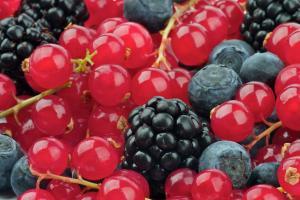
Watch out for fruit – it masquerades as the ultimate healthy food, but most fruit contain quite a lot of sugar and so don’t fit with the low-carb lifestyle. Berries are lower in carbs and are a much better bet.
Definitely stay away from fruit juices and smoothies – they are worse than fresh fruit, as they remove the fibre, increasing proportion of sugar. Make your own smoothie with yoghurt and fresh crushed berries.
Dried fruit such as raisins, dates or apricots tends to be very high in sugar.
Good low-carb options: berries, rhubarb, plums
Bad low-carb options: most sweet fruit, fruit juices, dried fruit
Low-carb dairy
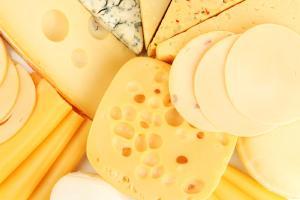
The general rule of thumb is that the higher the fat content, the lower it is in carbs. Stay away from anything that’s labelled as low-fat! That’s usually done at the expense of higher carb content.
Good low-carb options: butter, cheeses, double cream, cottage cheese, cream cheese, sugar-free yoghurt
Bad low-carb options: anything labelled low-fat
Fats and oils on a low-carb diet
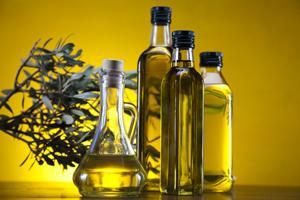
Most fats and oils have zero carbs. You can use them liberally to ensure that you get sufficient amounts of fat. Some diet plans have specific recommendations on preferred types of fats and oils. There is an ongoing debate about oils with high Omega-6 content.
Good low-carb options: butter, olive oil, coconut oil, sunflower oil
Bad low-carb options: processed hydrogenated fats, margarine
Low-carb baking and desserts
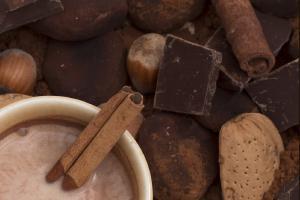
It is possible to make desserts, breads and baked goodies when on a low-carb diet, but you will need to use low-carb ingredients and slightly different methods than with traditional recipes.
Have a look at low-carb baking, low-carb bread and low-carb dessert recipes on this website, and check out this book on low-carb baking.
Some low-carb baking supplies are available from our online shop.
Good low-carb options: nut flours (almond, coconut), sweeteners (Stevia, sucralose, erythritol), sugar-free chocolate, sugar-free cocoa powder
Very, very bad low-carb options: sugar, grain-based flours. These two items epitomise high-carb and are basically the devil incarnate. Avoid them always and at all costs.
If you are on Google+, check out our low-carb recipes page: Low Carb Support on Google+
I am also on Twitter and Pinterest.


